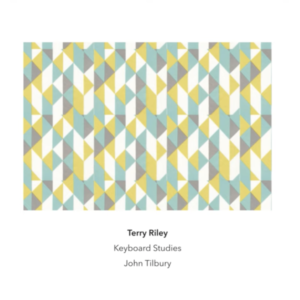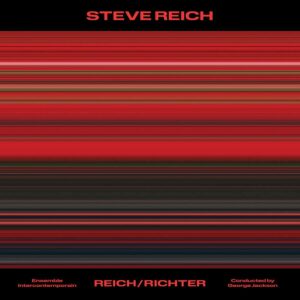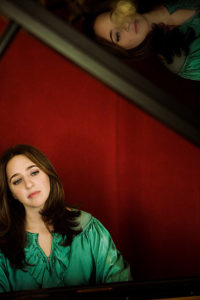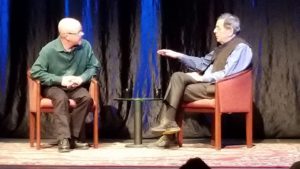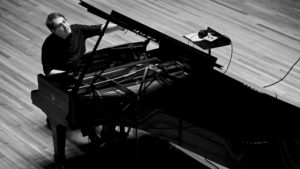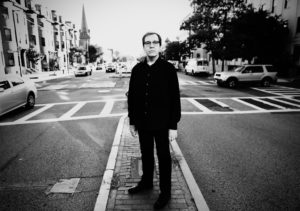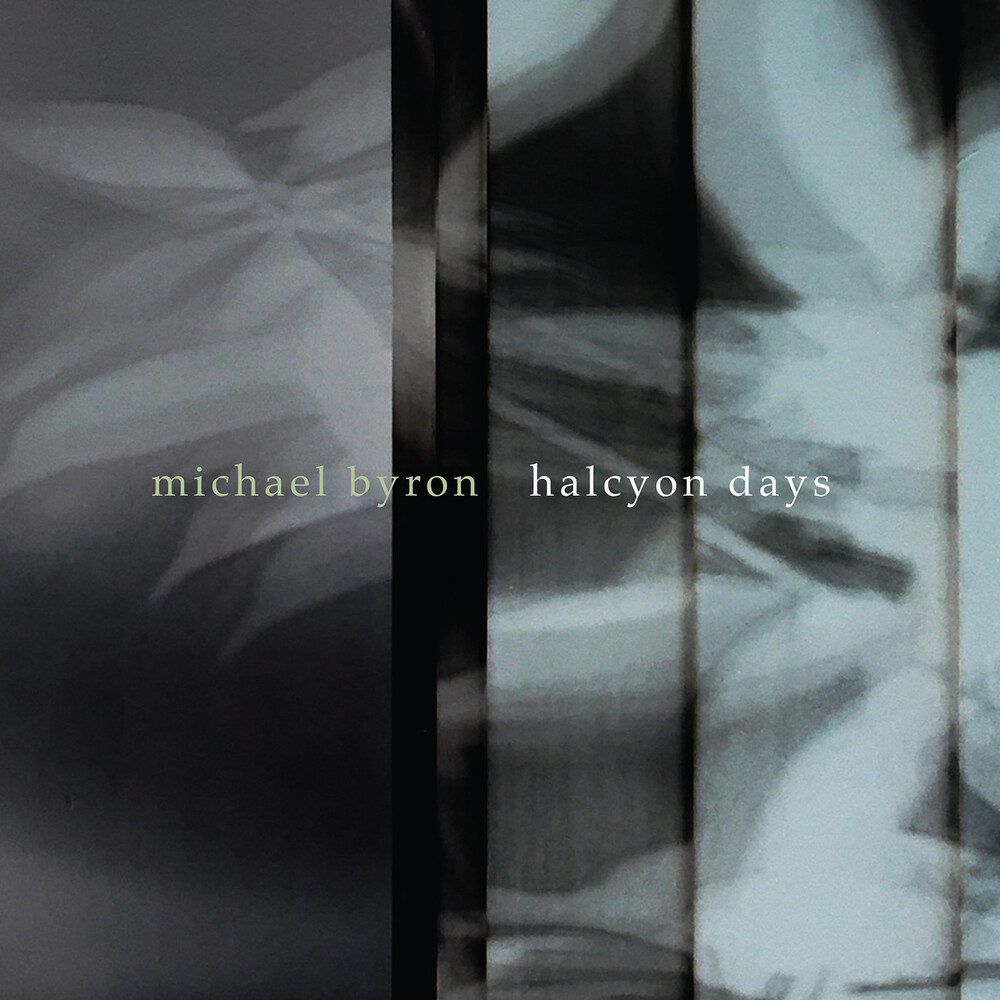
On February 10, 2023, Cold Blue Music released Halcyon Days, a new album of music by composer Michael Byron. The CD consists of percussion and keyboard pieces that date from early in Byron’s career providing new insight into the beginnings and development of his brilliantly original style. The performers on the album include Vicki Ray and Aron Kallay, two of the top new music pianists in Los Angeles. The legendary William Winant and his versatile percussion group are also heard on this CD. The material dates from 1972 to 1978 and also includes one recent work from 2016, performed by New York-based pianist Lisa Moore. As stated in the press release “This album treats us to clangorous clouds of polyrhythms and simple, direct, quiet works, both of which explore rich harmonies and bespeak a sense of transcendent motionlessness.” The CD is dedicated to Winant, longtime friend and colleague of the composer.
The music of Michael Byron seemingly defies conventional explanation. It is minimalist, almost in the extreme and is comprised of basic musical materials. It has no obvious formal structure, no melodic development or even a consistent rhythmic organization. The repeating patterns and layers weave in and around each other, creating a lush harmonic field that often evokes a deep sense of the mystical. This music seems to be in constant motion, yet at the same time it is essentially static, like listening to a small stream or brook splashing along – always moving and changing, but somehow staying the same.
The earliest piece on the CD, Drifting Music, dates from 1972 and illustrates some of the distinctive characteristics of Byron’s musical processes. Drifting Music opens with a series of solitary tubular bell chimes that are allowed to ring out for several seconds. More tones are added in a nearby pitch via overdubbing, and the interaction of the tones shimmer in the listener’s ear. The effect is both solemn and invigorating, with an impact greater than the simplicity of the sounds would suggest. Extracting the fullest expression from the most elementary musical gestures is an important aspect of Byron’s craft and is clearly evident in this early work.
In Music of Every Night (1974), Byron extends his ideas across two distinct timbres: maracas and marimbas. The piece opens with quietly continuous maraca sounds, like the soft buzzing of insects on a warm tropical night. After two full minutes, marimba riffs are heard in different registers, mixing and melding in a series of luminescent harmonies. The marimbas are used primarily for their pitches and timbre, with less emphasis on the rhythms. The result is unexpectedly introspective, exotic but not cliché. Music of Every Night is impressive in that it employs primarily rhythmic instruments to create a gentle reflective mood. The sure touch by percussionist William Winant, along with precise overdubbing, produces a seamless blend of sound.
Music of Steady Light (1978), with three movements, is the longest and most complex piece on the album, totaling over 32 minutes. This is performed by the William Winant Percussion Group and includes marimbas, xylophones, glockenspiels and vibraphones. Movement I opens with a scatter of deep syncopated marimba tones in the lower registers and this is soon joined by vibraphone notes that add a mysterious feel. The dynamics, tempo and complexity increase as the movement moves forward, building up layer by layer. The listening becomes an immersive experience as the polyrhythms swirl and weave in and around each other. The notes come with a sense of purpose, like a driving rain, although never out of control. The energy gradually dissipates over the second half of the movement as the tempo slows and the notes thin out, fading at the finish
The second movement employs bright, luminous phrases ringing out from several instruments – vibraphone, glockenspiel and xylophone. Overlapping passages are heard with rapid, broken rhythms and syncopation, all played without a common beat. Beautiful interactions are heard among the overtones that combine to sound like a giant wind chime. The repeating rhythms and ringing harmonies act together to form an organic whole, in the absence of any regular structure. The playing is masterful, given the necessary coordination of the many ringing phrases. About halfway through the tempo slows, and this provides clarity by letting the phrases breathe. The sensations become less frenetic and dreamlike as the movement concludes.
The third movement starts off with a low hum in the vibraphone and sparkly high notes from the glockenspiel. The low notes form a nice foundation for the individual glockenspiel notes that gleam like bright stars in clear night sky. As the movement proceeds, the texture becomes active and more intense – a busy feel. At 4:40 a series of chime-like phrases ring out, adding some order to the effervescent mixture of sounds. The phrases pour out, seemingly at random, but ultimately building to a sense of the other-worldly. The playing is impressive – all the instruments are independent of each other, yet with no loss of overall expressive power. Slowing at 9:30, the pitches drop and dynamics are reduced before a slow fade out to the finish.
Music of Steady Light has many seemingly random moving parts, but Byron’s artful vision, and the virtuosity of the Winant Percussion Group, combine for an extraordinary listening experience.
Starfields (1974), for four-handed piano, begins with a repeating series of strong chords in the middle register that clang away like an urgent alarm. The pitches do not change and the rhythms are slightly syncopated, adding tension. A solitary lower chord is heard at intervals and this has, by the contrast, a warmer feel. The chords accelerate in tempo while the rhythms deconstruct, and the sounds mix together in a lovely swirl. The flow of notes is at a consistently strong dynamic, unvarying, so that the initial pounding, percussive sensation is sustained. The muscular playing of Vicki Ray and Aron Kallay is full of surging power as the piece builds to an unexpectedly quiet conclusion.
The final track is Tender, Infinitely Tender (2016), the most recent piece of the album. This solo work is performed by pianist Lisa Moore. At the opening, lovely piano arpeggios ring out as lush chords soon appear in the lower registers. There is no melody or overall structure apart from the repeating patterns and a relaxed tempo. There is a transcendental, spiritual feel to this and the phrases roll along as if they never need to end. A quiet key change at about the halfway point provides a sense of harmonic movement, a feature Byron employs in other recent works such as In the Village of Hope. Towards the finish the tempo slows, becoming softer and with fewer notes as it coasts to a fading finish. Tender, Infinitely Tender is a beautiful work played with a sensitive touch and great emotional expression.
Halcyon Days confirms a consistent musical vision that can be readily observed in these early works of Michael Byron. The ability to extract lush harmonies from pitched percussion and to create a sense of expressive integrity in the absence of formal structure make Michael Byron an indispensable contributor to the evolution of new music over the last 50 years.
Halcyon Days is available directly from Cold Blue Music and other popular retail outlets.
The William Winant Percussion Group is:
William Winant
Tony Gennaro
Michael Jones
Scott Siler

